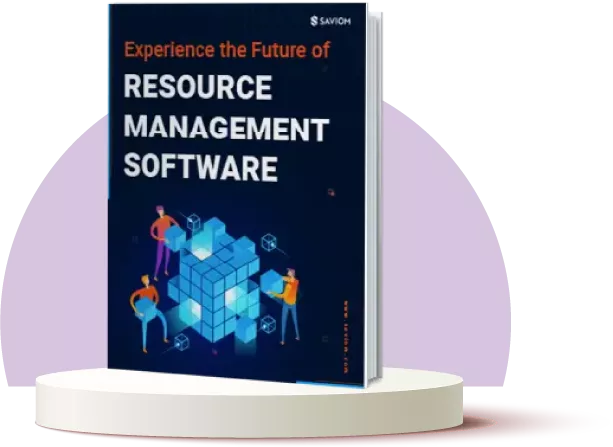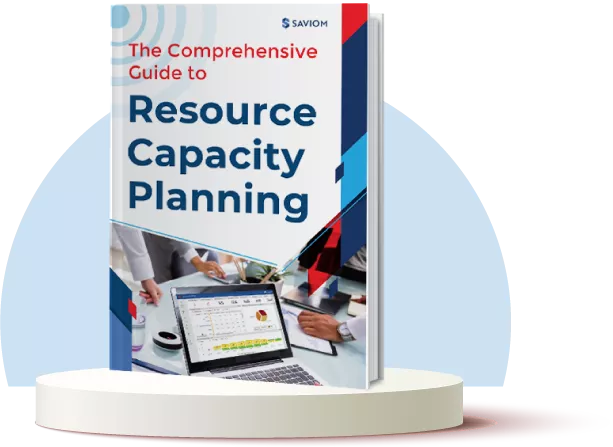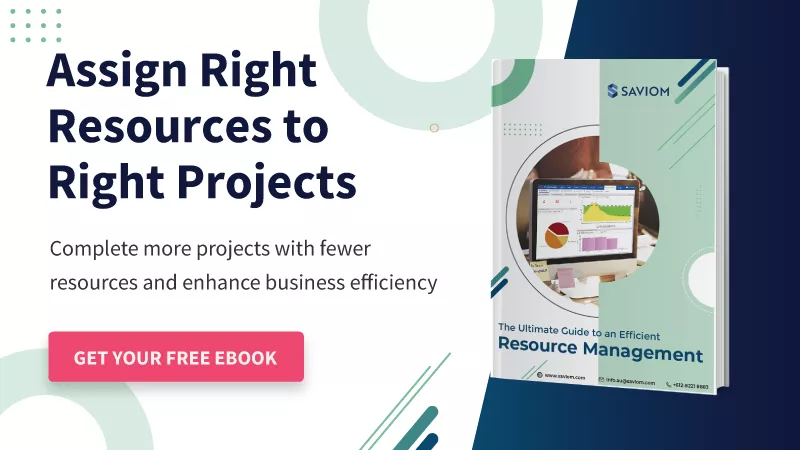Are you struggling to attract skilled resources to your firm?
Do you frequently notice a dip in employee engagement and productivity?
Is your firm experiencing a significant increase in turnover rates?
If you are facing these business challenges, it’s indicative of an inefficient talent management process in your firm. Improper talent planning can result in subpar work quality, project schedule delays, operational inefficiencies, and lower profitability.
That’s why it’s imperative for organizations to constantly analyze, adapt, and improve their talent management processes to keep up with changing business goals and priorities. This helps them retain top talent and enhance employee productivity, which leads to better organizational performance and long-term success.
In this blog, we’ll discuss 9 key steps to optimize and streamline the talent management process that helps firms ensure that employees remain engaged and productive.
But first, let’s start with the basics!
What is a Talent Management Process?
A talent management process is a systemic approach used by organizations to recruit, develop, and retain highly skilled employees. It encompasses a range of activities, including recruiting, onboarding, training, performance management, and succession planning. This process ensures that the right people are in the right roles. Thus, a robust talent management process helps organizations build an optimized workforce and boost business performance.
Now, let’s read the benefits of implementing a talent management process.
Why Implement a Talent Management Process?
Implementing effective talent management processes is key to business success. It enhances employee productivity and engagement through consistent training and development opportunities. When resources are equipped with the necessary skills and competencies, they are more competent in their roles. This helps them work productively and actively contribute to the organization’s success.
Additionally, robust talent management facilitates succession planning. It allows companies to identify and nurture high performers for critical or leadership roles. Thus, it enables the upward mobility of employees, which improves their job satisfaction and fulfills their career aspirations. This helps firms to lower turnover rates, reduce unnecessary recruitment costs, and retain institutional knowledge.
Lastly, a well-defined talent management framework focuses on optimizing employee experience and building a conducive work environment. Both these factors have a profound impact on overall workforce performance. Moreover, it helps organizations establish a strong employer brand, which plays a significant role in attracting and acquiring the best candidates from the market.
Read more: The Benefits of Talent Management: How to Transform Your Business Potential?
Now that you’re aware of its importance, let’s move toward the various steps to create a streamlined talent management process.
9 Key Steps for Streamlining the Talent Management Process
Streamlining your talent management processes helps you to efficiently optimize the employee lifecycle.
Let’s understand the key steps on how to do it effectively.
Define Your Immediate & Long-Term Talent Requirements
Understanding immediate and future talent needs is crucial to aligning your workforce with organizational goals. Start by assessing current projects and long-term business objectives to identify required skills and roles. Then, engage with department heads to forecast future demands and create a comprehensive talent plan. Defining these requirements will enable you to better strategize hiring, training, and development initiatives, ensuring your organization remains competitive and has an efficient talent pipeline.
Read more: Talent Acquisition vs. Talent Management: 7 Crucial Differences to Know
Create a Proper Hiring Strategy to Acquire the Right Talent
According to G2, “Online job boards pull in 60% of job applications, and social networks generate 56%.”
In the second step, develop a hiring plan that aligns well with the talent needs. For this, talent managers can use targeted job postings and recruitment channels to find the right candidates. For example, if you need tech-savvy employees, focus on tech job boards and university partnerships. Also, clearly outline job requirements and desirable qualities and implement a structured selection process that includes effective interviewing, skills assessments, and reference checks. All of this will ensure that the organization attracts and hires qualified candidates efficiently.
Design a Robust Onboarding Process for New Employees
As per Zippia, “Strong onboarding programs can increase new hire retention by 82% and productivity by 70%.”
A well-structured onboarding program is essential for smoothly integrating new hires into the organization. Managers can develop a comprehensive orientation that introduces both organizational values and job-specific responsibilities. Next, they should ensure that new hires have access to the necessary tools, resources, and support, including mentors or peer guidance. Finally, tailoring the onboarding experience to address individual learning styles and paces, you help new employees feel valued and welcomed, leading to higher retention and productivity levels.
Impart Targeted Training Programs to Mitigate Skill Gaps
According to Axonify, “92% of survey respondents say that good formal workplace training positively impacts their engagement with the job.”
The next step for talent managers is to identify gaps within the team and design customized training programs to address them. They can organize workshops, online courses, or in-house training sessions. For example, if a team of software developers is struggling with adopting a new programming language, talent managers can organize a specialized in-house boot camp focused on mastering that language. This will help the team quickly develop the necessary skills, enhance engagement, and improve project outcomes.
Read more: How Can Retraining/Upskilling Future-Proof Your Workforce?
Develop an Effective Succession Planning Process
A report by Kaplan suggests, “The third most common reason (72%) for implementing a TMP is to foster business growth by developing new leaders.”
Succession planning is a vital component of talent management that ensures seamless continuity of leadership and key roles within an organization. For this, talent managers should assess the skills and performance of high-potential employees for future leadership positions and create tailored development plans, including training, mentorship, and shadowing opportunities. By proactively preparing for future leadership needs, you minimize disruption, ensure a steady flow of talent, and secure the long-term success of your business.
Establish Employee Engagement & Retention Strategies
As per Forbes, “Companies with highly engaged employees are 23% more profitable and 18% more productive.”
It is crucial to maintain optimal engagement levels among employees. Talent managers can implement strategies such as reward and recognition programs, wellness initiatives, flexible work arrangements, and generous PTO policies. Additionally, conducting team-building activities can further enhance engagement by fostering stronger interpersonal relationships and improving collaboration. These efforts boost productivity and build long-term loyalty, resulting in higher retention rates and a competent workforce.
Read More: 11 Effective Strategies to Enhance Employee Engagement
Facilitate a 360-degree Feedback Mechanism
According to Gallup, “By simply giving more continuous strength-based feedback, companies can reduce turnover by 14.9%.”
Implementing a 360-degree feedback mechanism offers employees a well-rounded view of their performance. This approach collects input from peers, supervisors, subordinates, and sometimes clients to create a comprehensive evaluation. For this, talent managers use specialized feedback tools and platforms that facilitate anonymous and structured input. The feedback must be constructive, highlighting both strengths and areas for improvement. This clarity helps employees boost their performance while promoting a culture of continuous improvement.
Review & Refine the Talent Management Process
The next step is to regularly evaluate your talent management process to identify areas for improvement. Managers should analyze key metrics and gather stakeholder feedback. For instance, if high turnover occurs in a department, investigate the causes and adjust strategies accordingly. After that, continuously refine processes based on findings to ensure they are effective and in sync with organizational goals and changing workforce dynamics. Regular reviews also help maintain a competitive edge and support ongoing success.
Read More: Talent Management Best Practices: 10 Ways Firms Can Enhance Business Efficiency
Leverage an Efficient Talent Management Software
Implementing robust talent management software can significantly streamline your talent management processes. These tools offer a centralized solution for managing recruitment, onboarding, performance evaluations, and employee development. It also automates routine tasks and provides real-time insights that help enhance decision-making and reduce administrative burdens, ensuring a more organized and strategic approach to managing your workforce.
Conclusion
A well-defined talent management process is crucial for building a skilled, motivated, and stable workforce. By implementing the aforementioned steps, you can tackle challenges like inefficient onboarding, high turnover, low engagement, and productivity. This will also help improve project outcomes and enhance ROI, driving sustainable growth and long-term success.
The Glossary
Read More: Glossary of Resource Workforce Planning, Scheduling and Management
The SAVIOM Solution
SAVIOM is undoubtedly the market leader in offering the most powerful and configurable Enterprise Resource Management Solution. Having more than 20 years of experience, this Australian-based MNC has a global presence in over 50 countries. It is also popular with more than 100 customers and helps them to achieve their business goals. SAVIOM also has products for project portfolio management, professional service automation, and workforce planning software which can be easily customized per business requirements.










